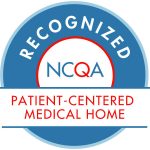Table of Contents
 Most of us think of high blood pressure as a diagnosis for grown-ups. But hypertension is a growing–and underdiagnosed–problem in children and teens. According to the American Academy of Family Physicians,3 to 6 percent of children have high or elevated blood pressure, rising to 30 percent for obese adolescents. High blood pressure increases a child’s risk of cardiovascular conditions as an adult and can lead to organ damage and other health issues. But how do you know if your child is at risk for high blood pressure? Your family pediatrician can help with diagnosis, prevention, treatment, and other resources and make parents aware of potential risk factors.
Most of us think of high blood pressure as a diagnosis for grown-ups. But hypertension is a growing–and underdiagnosed–problem in children and teens. According to the American Academy of Family Physicians,3 to 6 percent of children have high or elevated blood pressure, rising to 30 percent for obese adolescents. High blood pressure increases a child’s risk of cardiovascular conditions as an adult and can lead to organ damage and other health issues. But how do you know if your child is at risk for high blood pressure? Your family pediatrician can help with diagnosis, prevention, treatment, and other resources and make parents aware of potential risk factors.
What Is Normal Blood Pressure for a Child?
There isn’t a “normal” blood pressure for younger children because young children’s bodies grow and change so quickly. In children under 13, we define hypertension as blood pressure in the 95th percentile or higher for their age, weight, and sex. In adolescents 13 years and older, blood pressure is assessed similarly to adults. Hypertension in teens is 130/80 or higher. (In case you’re wondering what the fraction-style numbers mean, the top number is your child’s systolic blood pressure, which measures the force their heart exerts on the walls of their arteries when it beats. The bottom number is diastolic blood pressure, the force on the artery walls between beats.) The CDC considers 130/80 to 140/80 high blood pressure in adults.
What Are the Risk Factors for High Blood Pressure in Children?
While high blood pressure in young children is usually related to an underlying medical condition, older children can develop high blood pressure because of obesity/overweight, poor nutrition, and lack of exercise. The AAFP identifies several risk factors for high blood pressure in children:
- Obesity and increased body mass index (BMI)
- Sleep disorders, including sleep apnea
- Chronic Kidney Disease
- Family history of hypertension
- Low birth weight
- Mother smoking during pregnancy
- Race and ethnicity: Black and Hispanic children are at greater risk.
Will My Child Exhibit Symptoms of High Blood Pressure?
One of the problems with high blood pressure in kids is that it doesn’t always involve easily identifiable symptoms. That’s why regular screenings and an ongoing dialog with your pediatrician are so important. However, the Cleveland Clinic identifies several signs of a blood pressure emergency that require emergency medical treatment:
- Headaches
- Seizures
- Vomiting
- Chest pains
- Heart palpitations
- Shortness of breath
How Can My Pediatrician Treat High Blood Pressure?
As pediatricians, our first approach to treating high blood pressure in children and teens involves lifestyle changes. We can achieve positive results with the following:
- Pediatrician-supervised weight loss if a child is overweight or obese.
- Improved nutrition, adding fresh fruits, vegetables, and low-fat dairy, increased fiber, and reduced sodium.
- Regular exercise, with a goal of 30 to 60 minutes of moderate to vigorous exercise three to five times per week.
- Stress reduction, including mindfulness and breathing exercises, meditation, and yoga.
- Family-focused interventions, including nutritional counseling to improve the entire family’s diet.
However, if children have underlying conditions, including obesity, heart conditions, chronic kidney disease, and diabetes, your pediatrician may recommend medications approved for use in children. Options include ACE inhibitors, angiotensin receptor blockers, calcium channel blockers, or thiazide diuretics.
Concerned About High Blood Pressure? Your Pediatrician Can Help
At Loudoun Pediatric Associates, we take new insights into childhood hypertension and new screening guidelines from the American Academy of Pediatrics very seriously. If your child has risk factors, we’ll monitor blood pressure at every checkup. We also check for underlying conditions and try to catch and address risk factors early as a prevention tool. If your child’s condition requires medication, we’ll work to find the safest approach best suited for their unique needs. However, in many cases, early identification allows us to start with diet and exercise, encouraging families to focus on a healthy lifestyle.







